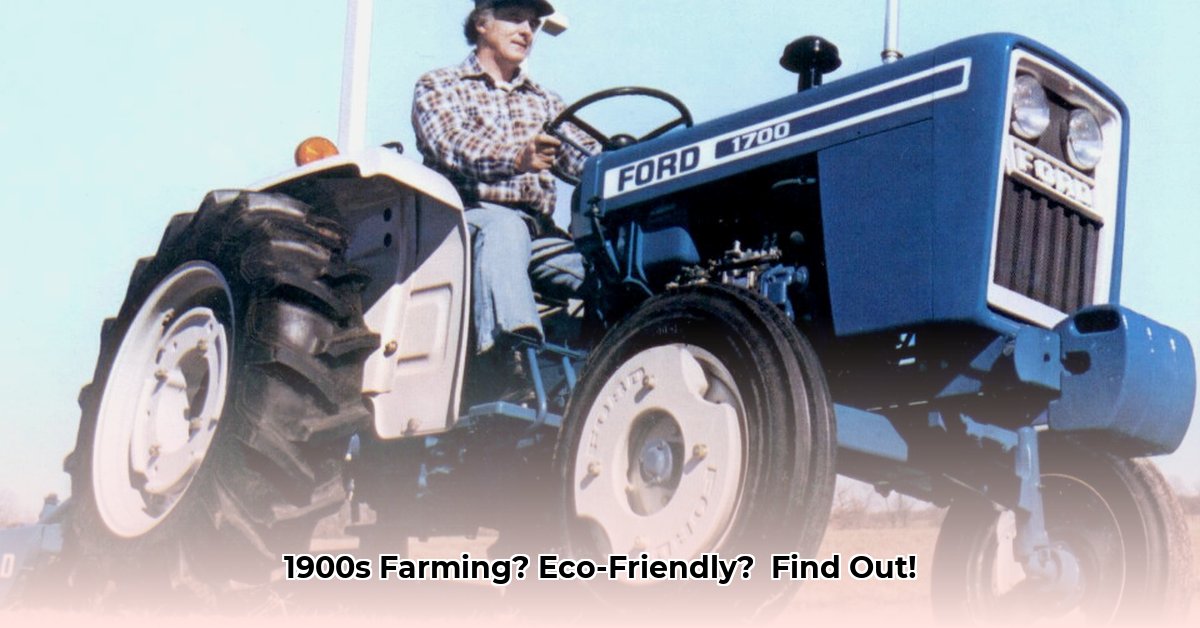
1700 Ford Tractor: A Sustainable Farming Solution
The Ford 1700 tractor, a symbol of simpler times, presents a compelling case for sustainable agriculture. Its fuel efficiency, straightforward mechanics, and repairability offer a refreshing alternative to modern, resource-intensive machinery. This article explores the 1700’s potential, addressing its limitations while highlighting its enduring value in today's farming landscape. It's more than nostalgia; it's a practical path toward environmentally and economically responsible farming. For more on restoring your tractor seat, check out these helpful resources.
Fuel Efficiency and Environmental Impact
The Ford 1700's compact 1.3L two-cylinder diesel engine, significantly smaller than many modern tractors, translates to remarkably lower fuel consumption. While precise figures per acre are difficult to obtain for such a vintage machine, the inherent reduction in engine size directly reduces fuel usage. This lower fuel consumption directly translates to a smaller carbon footprint compared to modern, high-horsepower tractors. Isn't minimizing your environmental impact a crucial factor in sustainable agriculture?
Mechanical Simplicity and Repairability
The 1700's straightforward mechanical design is a key advantage. Its simplicity makes maintenance and repair significantly easier than many modern tractors, which often rely on complex electronics. This ease of repair empowers farmers to handle many fixes themselves, reducing reliance on expensive mechanics, minimizing downtime, and significantly reducing waste from frequent part replacements. This hands-on approach aligns perfectly with the core principles of sustainable practice, extending equipment lifespan and fostering self-sufficiency.
Sourcing parts for a vintage tractor might seem daunting, but resourceful solutions exist. A thriving online community of enthusiasts offers valuable support and parts leads. Furthermore, the rise of 3D printing opens new avenues for creating custom replacements for hard-to-find or obsolete components. This community-driven approach highlights the power of collaboration and innovation in sustainable agriculture.
Power Output Limitations and Suitability
The 1700 Ford's 25 horsepower output isn't suited for large-scale commercial farming. However, its capabilities are perfectly adequate for smaller farms, specialized tasks like orchard cultivation or vineyard management, or for farmers prioritizing gentler land management that minimizes soil compaction. Its limitations should not overshadow its virtues; it's a powerful tool for specific applications, prioritizing fuel efficiency and reduced environmental impact over sheer power.
Sustainable Restoration: A Practical Guide
Restoring a Ford 1700 is not merely a repair; it's a commitment to sustainable practices. Reusing and repurposing existing components extends the tractor's life, minimizing waste and reducing the demand for new manufacturing. This restoration process aligns with circular economy principles, reducing the overall environmental impact of farming operations.
Step-by-Step Restoration:
- Thorough Inspection: Begin with a meticulous assessment, documenting needed repairs and replacements. (Expected time: 4-6 hours)
- Parts Sourcing: Utilize online forums, vintage tractor dealers, salvage yards, and 3D printing to acquire necessary parts. (Expected time: 2-3 weeks)
- Prioritized Repairs: Focus on essential mechanical components first, deferring aesthetic improvements until functionality is restored. (Expected time: 2-4 weeks)
- Community Engagement: Connect with online forums and local clubs for expert advice and support. (Ongoing)
- Documentation: Document the entire process, sharing your experiences and knowledge to benefit other enthusiasts. (Ongoing)
Actionable Steps for Stakeholders
Small-Scale Farmers: Assess suitability, create a preventative maintenance plan, and consider joining a local parts-sharing network.
Enthusiasts: Document repair procedures and share your expertise through online platforms, fostering collaboration and knowledge sharing.
Agricultural Colleges: Integrate the 1700 into curriculum, highlighting its role in sustainable agriculture and conducting comparative lifecycle analyses with modern tractors.
Conclusion
The Ford 1700 tractor, while not a universal solution, offers a compelling pathway to sustainable farming. Its fuel efficiency, repairability, and adaptability make it an ideal tool for specific farming operations and a fascinating case study in sustainable agricultural practices. Embracing its limitations while leveraging its strengths highlights the potential for environmentally and economically responsible farming.